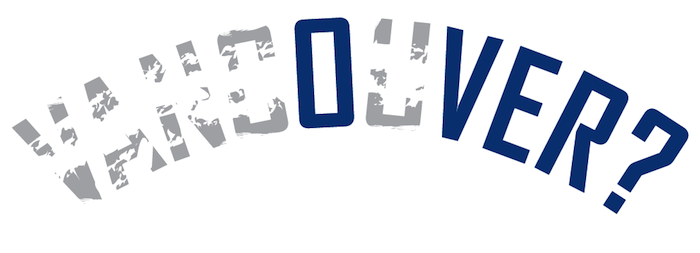While one era ends, the next doesn’t know where to begin
During his end-of-season press conference, Canucks GM Mike Gillis stressed the need for a "reset" within the organization, which is an appropriately vague term for a team that doesn’t really know which direction it’s heading in.
They believe they can still contend, yet their core is aging. They want an uptempo brand of hockey to re-capture a softening audience, yet they don’t have the personnel up front to do that anymore.
So what should they do?
Gillis’s actions this off-season will potentially define a new era in Vancouver. He’s already fired the coach, but that will be little more than a lateral move if he fails to improve the roster. Since 2010-11 Gillis seems to have flip-flopped between trying to build a team based on speed and skill to one based on size. With several holes in the line-up that need to be addressed, it’s time for Gillis to pick a direction and commit to it.
That direction should be this: doing everything necessary to acquire young, top-end talent capable of being cornerstone offensive players within the next few years.
That will be a very difficult task. What makes this an extraordinary predicament for Gillis is that with Alain Vigneault gone, his number is going to be up next if things continue to get worse before they get better. It’s going to be exceedingly difficult for Gillis to position the team for long-term success when he’s (presumably) on such a short leash himself.
Why is it so essential the Canucks acquire young talent? A quick look at the average age of their roster and what they have in the system and it’s obvious: there is simply no one on their way up capable of eventually carrying the offence the way the Sedins have over the past 7 years. It’s debatable whether Daniel and Henrik are still able to do that, but the fact that we’re even debating it at all is a sign that the day when they are no longer top line players is, at best, not that far off. They’re not the thoroughbred 100-point superstars they were three years ago.
Cam talked about this in his post from last week: the last time a new coach was brought into Vancouver, core offensive players Brendan Morrison and Markus Naslund were on the downslope, but the team had the Sedins emerging and newly-acquired goalie Roberto Luongo. The Canucks now have a new coach and the twins are the age that Naslund was then (32), but where is the new guard? Nicklas Jensen? Brendan Gaunce? They could become fine complimentary scorers, but it’s hard to imagine them carrying the load the way the Sedins do.
At the same time, fans and management need to be concerned that Ryan Kesler’s peak season may be behind him as well. With all his injury issues, I’d be very wary of relying on Kesler to be the first line centre in a couple of years when it’s time to make that transition.
Mike Gillis has made a choice to go with Cory Schneider long-term in an effort to "extend the window". The problem with that is in a few years when Schneider is in his prime, it’s very likely the Canucks aren’t going to have the support around him to be a contender. Imagine a 30-year-old Schneider with the Sedins in their mid-30s and Ryan Kesler at 31 in a conference with the likes of Los Angeles, San Jose, and a maturing Edmonton team. That sounds like a 4-8 seed that continually gives up 2nd and 3rd round picks at the deadline in the hopes of winning a couple more playoff games. That sounds like the Calgary Flames.
Would it have been that much of a risk to assume that Roberto Luongo was going to remain an elite goalie for a few more years while Eddie Lack developed into an NHL starter? Was that risk worth giving up the return they would have received for Schneider? Ironically, by committing to Cory in an effort to keep the team competitive for longer, Gillis may have blown his best chance at restocking the team’s most barren cupboard: the one labeled "quality offensive prospects".
I’m not suggesting the Canucks "blow it up" and tank for draft picks, but they’re going to need to get creative. For a team loaded with No Trade Clauses, that’s a lot easier said than done. The optics of trading a player with an NTC are bad, but what other choice do they have? The alternative is watching the core of this team continue to erode while management rearranges deck chairs in the form of giving up picks for complimentary pieces.
Stanley Cup winning teams boast elite players in the prime of their careers. There is no way around this model. That’s why I’m not as excited about a new coach as most seem to be, because no matter how competent a coach is, no coach has ever led a team without elite players in the prime of their careers to a Stanley Cup. Especially not in the salary cap world, where having key players on cheap deals is essential.
The biggest mistake Mike Gillis ever made might turn out to be not trading Cory Schneider during the 2011-12 season. But that ship has sailed, and Gillis and Laurence Gilman have a heavy, heavy workload ahead of them this summer. What they end up accomplishing will have a dramatic effect on both the future of the Canucks and the future of their employment.
More than anything, they need to avoid the trap of becoming a team that’s merely good enough to make the playoffs, and find a way to acquire players that have the potential to become the new faces of this franchise.
Recent articles from Jordan_Clarke






